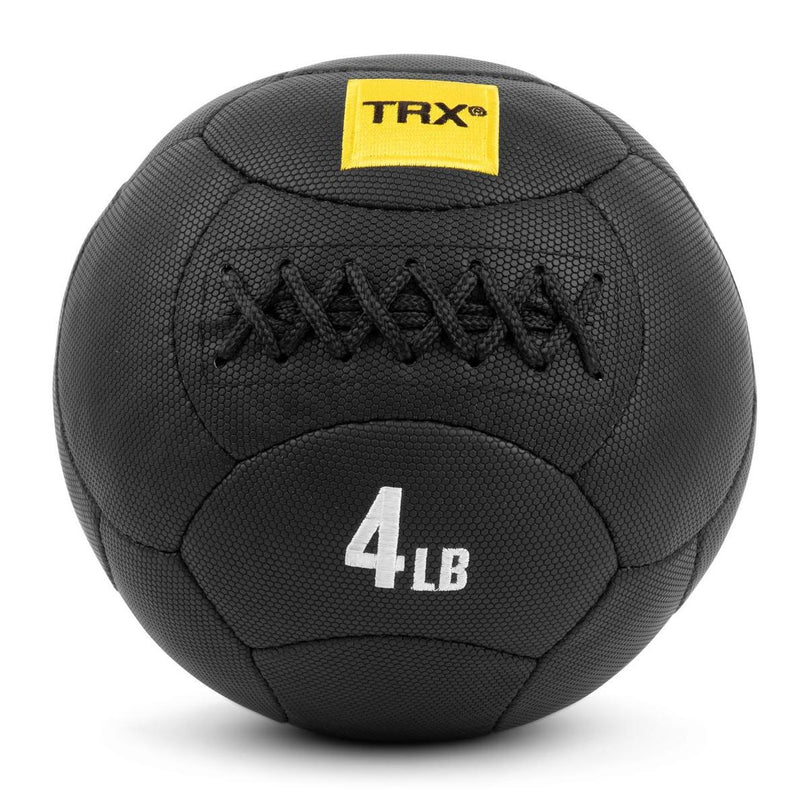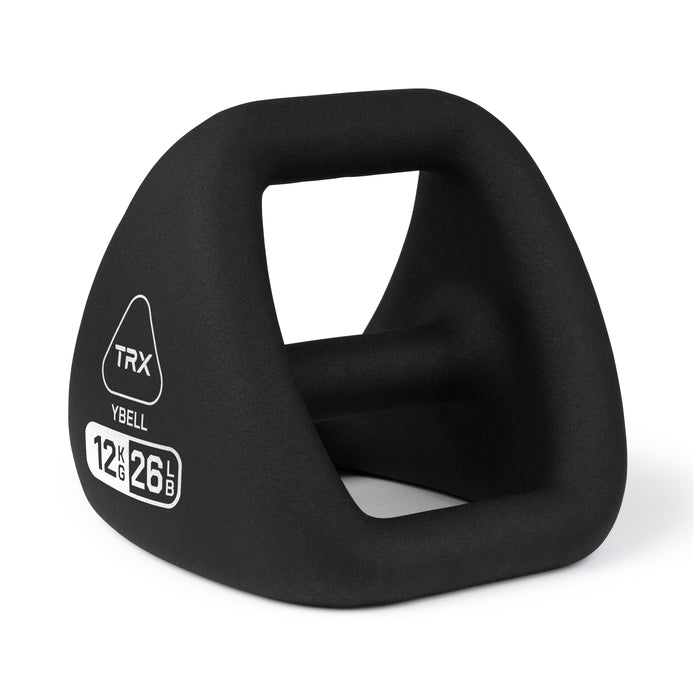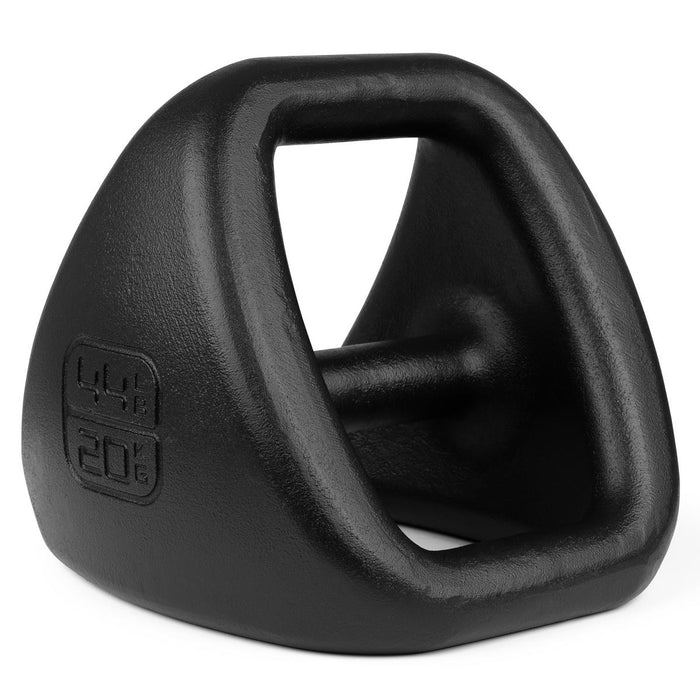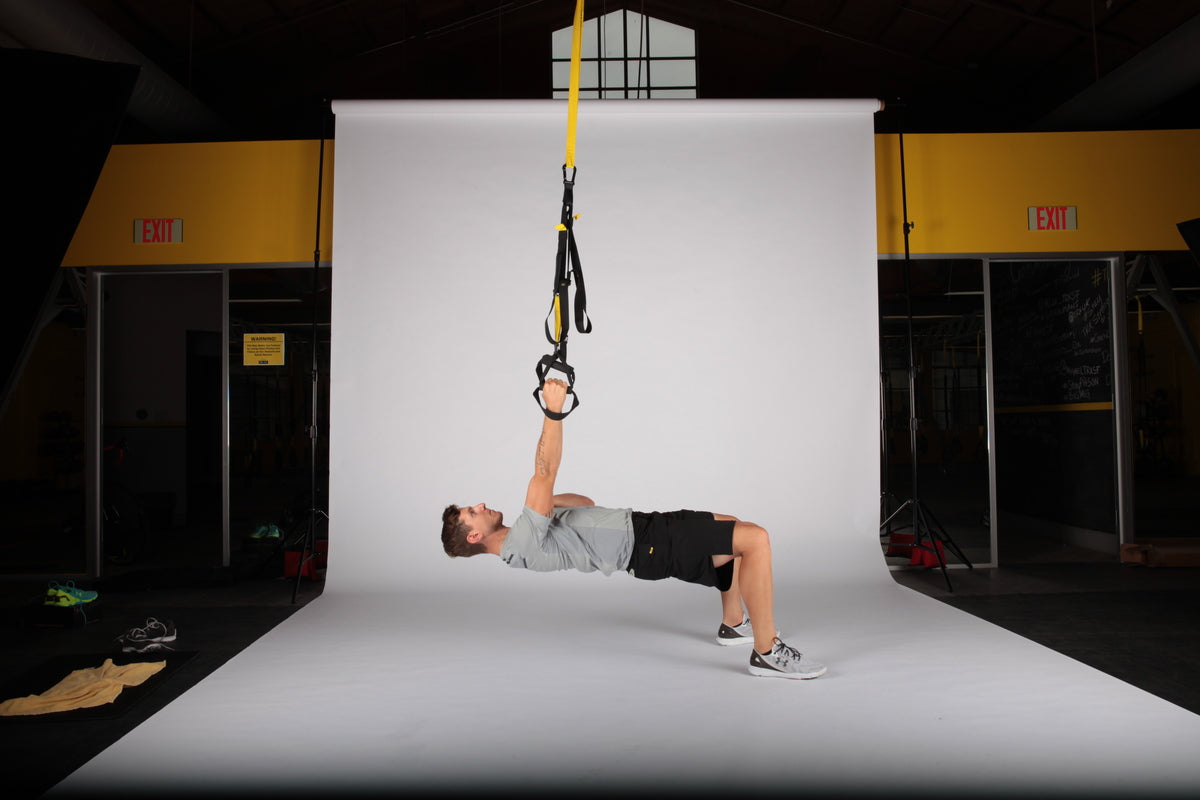Medicine balls and medicine ball exercises have been used for generations by fitness enthusiasts. They are now advanced tools that aid fitness lovers of all levels. Most exercises that use medicine balls are full body exercises, making them useful for all types of workouts and to reach fitness goals.
Medicine balls come in a variety of weights and materials. They are portable and may be used at home, in the gym, or outdoors, making them excellent for various workouts in almost any venue. In this article, medicine balls, the benefits of medicine balls, how to choose the right medicine ball, and some workout ideas using medicine balls will be discussed.
What are Medicine Balls?
What Do Medicine Balls Do For You?
Medicine balls are weighted exercise tools that are great for building strength, especially in your core muscles, and enhancing your power and coordination. When you use medicine balls for exercises like throws, slams, or rotational movements, you're working multiple muscle groups at once. This can boost your calorie burn, increase muscle endurance, and improve your athletic performance. Medicine balls are versatile enough for all fitness levels and can make your workouts more dynamic and engaging. Whether you're looking to tone up, build strength, or improve your sports performance, medicine balls can be a valuable addition to your exercise routine.
Benefits of Medicine Ball
Many fitness instructors, exercise facilities, and athletes incorporate medicine balls into their workouts because of the variety of poundages available and the vast exercise library associated with medicine ball usage. A multitude of medicine ball exercises are full body and aid in increasing muscular strength, muscular endurance, power, coordination, control, and agility. They are also used by physical therapists and personal trainers to aid in athlete rehabilitation.
Enhances Overall Body Strength
Using a medicine ball in circuit workouts or within a sequence of movements can enhance the challenge of any movement by adding resistance. This can aid in developing explosive power and muscular endurance. For instance, combining a squat with a ball throw (known as a wall ball) not only improves your lower body strength, endurance, and power but it also improves your throwing and catching technique as shoulder strength and coordination improves. Depending on the speed at which the wall ball exercise is performed, cardiovascular capacity will also improve over time.
Increases Velocity
Velocity, which involves speed and direction, can be improved in athletes by using medicine balls during warm-ups and when cross-training. Integrating a medicine ball into sports warm-ups can significantly enhance accuracy and strength through slower, repetitive actions. When an exercise is slowed by adding a medicine ball, the form and correctness of the movement are developed and cemented into muscle memory.
When cross-training, speed can be layered on the correct movement pattern, aiding in improved velocity, increased fast-twitch muscle fibers, and strength of the athlete. This same strategy is accessible to fitness enthusiasts at any level. The added weight of a medicine ball encourages focused movement and helps develop the correct technique. This practice not only improves coordination and flexibility but also contributes to enhanced speed in movements.
Full-Body Workouts
Incorporating a medicine ball into your workouts increases activation and strength development of your core muscles. The added weight intensifies the engagement of your core, regardless of the exercise type, leading to a comprehensive full-body workout you can do at home. This increased engagement burns more calories and accelerates strength gain and core stability over time. There are plenty of medicine ball exercises that can give you a full-body workout by itself.
Post-Injury Recovery
Medicine balls play a crucial role in aiding patients' recovery from injuries. Their ability to engage the entire body without causing excessive strain on the joints makes them a valuable and gentle method for building endurance post-injury or setback. They are particularly favored by patients recuperating from knee, shoulder, and spinal injuries. However, it's essential to always seek guidance from your doctor before reintroducing physical activity during the recovery process.
Try one of our TRX products today:
Why is a Medicine Ball Better Than Other Weights?
Medicine balls are superior to weights because they help to build explosive power, have a greater range of rotational exercises, and allow you to release it during the exercises, unlike weights. Based on how the medicine ball responds during or at the end of an exercise, it also gives immediate information as to your power. People who are concerned about their finances and who also place a high emphasis on space efficiency will find that medicine balls are a fantastic option. Because they are available either separately or in sets, you may gradually increase the size of your collection to accommodate your exercise requirements.
How to Use a Medicine Ball
Below is a list of major movement patterns and ideas to aid in establishing appropriate exercises and workouts to meet your individual needs.
1. Toss
Toss the ball against a wall while standing with feet shoulder-width apart or in a fighting stance/batter’s stance. You can use one or both hands for the throw. Additionally, you have the option to perform throws from your knees, lying on your back, or even while jumping to add variety and challenge to the exercise.
2. Catch
Throw the ball against a wall and catch it as it rebounds, or engage in a game of catch with a partner by tossing the ball back and forth. These activities are not only enjoyable and fun but they are also great for developing hand-eye coordination, reflexes, and upper body strength.
3. Lift
Create a circuit routine where you incorporate squats with the medicine ball, overhead presses, lunges, rows, and abdominal twists or woodchops. This not only adds variety to your workout but also helps improve overall strength, endurance, and coordination. Plus, using a medicine ball can engage different muscle groups and add a dynamic element to your routine.
4. Balance on it
Utilize a medicine ball as part of your workout equipment to improve balance. Place either one or both hands on the ball while doing push-ups to increase stability and engage your core muscles. Another option is to rest your feet on the ball and bridge your hips off the floor, targeting your glutes for a more challenging exercise. Additionally, you can incorporate agility training by treating the ball as a hurdle and jumping over it, adding a dynamic element to your routine. These variations not only add variety but also help improve strength, stability, and agility.
5. Roll
Medicine balls can offer sufficient density to target muscle fascia and release tight muscles, especially in particularly tender areas. This versatile approach not only helps with muscle relaxation but also aids in improving flexibility and reducing tension in the body.
6. Use it as a Spotter
The ball can serve as a helpful guide during exercises. For example, while squatting, position the medicine ball behind you to gauge the depth of your squat, ensuring you go deep enough for proper form. Alternatively, you can hold the ball between your thighs to ensure proper tracking of the knees during an exercise such as a bridge. In this way, the medicine ball acts as a barrier to prevent your knees from falling inward, providing support and preventing further strain on sensitive areas. This technique not only helps maintain correct form but also promotes safety and injury prevention during workouts.
What Do You Do With Medicine Balls?
Medicine ball exercises and workouts can also be tailored to meet fitness goals. Four common fitness goals and eight exercises are listed and described below.
- Increase Cardiovascular Performance and Improve Strength: By integrating cardio and strength training, you can simultaneously enhance your cardiovascular fitness and strength, leading to quicker and more efficient results.
- Performing Full-body Workouts: Medicine balls offer a complete workout, engaging every muscle group to ensure you build overall strength.
- Enhancing Adaptability in Training: These versatile tools can be used for basic strength and recovery exercises or included in circuit and HIIT routines to add variety and intensity.
- Developing Core Muscle Strength: Medicine balls engage your core with every exercise performed. Regular usage of medicine balls will increase core muscle strength and stability.
Eight Example Medicine Ball Exercises
8. Medicine Ball Circles
Medicine ball circles are a type of exercise that involves using a medicine ball to perform circular motions with the arms or the entire body. These movements are typically done in a controlled manner and can target various muscle groups depending on the specific variation of the exercise. The purpose of medicine ball circles is to improve strength, stability, and coordination, making them a beneficial addition to fitness routines aimed at enhancing overall physical fitness and performance.
Steps to performing medicine ball circles::
- Stand with feet shoulder-width apart, holding the medicine ball at chest height.
- Without allowing your shoulders to be pulled forward, extend arms and rotate the torso to the right, making a circle with the ball from right to left.
- Reverse direction and complete circles in both directions.
- Keep core engaged and perform at a steady pace.
- Repeat for desired reps and sets.
7. Mountain Climbers
Mountain climbers are a type of exercise that involves the body in a long arm plank position and alternately bringing one knee at a time towards the chest in a running motion. This exercise is often done at a quick pace to engage the core, shoulders, and leg muscles for a full-body workout.
Steps to performing a mountain climber:
- Start in a long arm plank position with your hands directly under your shoulders and your body forming a straight line from head to heels.
- Push the ground away and engage your core muscles to maintain stability throughout the exercise.
- Bend your right knee and bring it towards your chest, keeping your hips level and pelvis steady.
- Quickly switch legs, extending your right leg back while bringing your left knee towards your chest.
- Continue alternating legs in a running motion, moving at a brisk pace.
- Focus on keeping your core tight and your upper body stable.
- Perform the exercise for the desired duration or number of repetitions.
6. Overhead Squat
Overhead squats are specifically crafted to improve your core stability by requiring constant core engagement. Incorporating a medicine ball for added weight not only intensifies the challenge but also targets your arms, shoulders, and upper back. Performing overhead squats correctly demands proper form and concentration to maximize their effectiveness.
Steps to performing an overhead squat:
- Begin by standing with your feet shoulder-width apart, holding a medicine ball with both hands directly above your head.
- Engage your core muscles to maintain stability throughout the exercise.
- Lower your body into a squat position, keeping your chest lifted and your knees in line with your toes.
- As you squat down, keep the medicine ball directly above your head, maintaining a straight line from your hands to your shoulders.
- Lower yourself until your thighs are parallel to the ground or as low as you can comfortably go.
- Press through your heels to return to the starting position, extending your legs and raising the medicine ball back above your head.
- Repeat the squatting motion for the desired number of repetitions, focusing on maintaining proper form and control throughout the exercise.
5. Push-ups
Push-ups with medicine balls involve performing push-ups while one or both hands are placed on medicine balls instead of the ground. This variation adds instability to the exercise, engaging the core, and shoulders, and stabilizing muscles. It also requires greater balance and coordination, making it a challenging yet effective way to increase the intensity of traditional push-ups.
Steps to performing push-ups:
- Start in a long arm plank position with your hands on the medicine balls, wrists directly under your shoulders, and body forming a straight line from head to heels.
- Push the ground away and engage your core muscles to maintain stability throughout the exercise.
- Lower your body towards the ground by bending your elbows, keeping them close to your body.
- As you lower yourself, maintain stability on the medicine balls and avoid letting it roll.
- Push back up to the starting position by straightening your arms, keeping your core engaged.
- Repeat the push-up motion for the desired number of repetitions, focusing on proper form and control.
4. Slams
A slam is an effective full-body exercise, working your core (medicine ball ab workout), shoulders, arms, glutes, and hamstrings. The medicine ball is lifted over your head and then slammed hard onto the ground in front of you.
Steps to performing an overhead slam with a medicine ball:
- Start by standing with your feet shoulder-width apart, placing the medicine ball between your feet.
- Engage your core muscles, squat, grab the medicine ball and lift it overhead, fully extending your arms. Feel free to rise up on the balls of your feet.
- As you inhale, brace your core and prepare to slam the ball down.
- Exhale forcefully as you slam the medicine ball down towards the ground in front of you, using your entire body to generate power.
- Bend your knees slightly and hinge at the hips as you slam the ball down, maintaining a strong core and a flat back. Follow through with your arms by powerfully swinging them back as you hinge.
- Aim to slam the ball with enough force to create a loud impact.
- Catch the medicine ball as it bounces off the ground.
- Repeat the overhead slam for the desired number of repetitions, focusing on using your core muscles to control the movement and generate power with each slam.
3. Russian Twist
The Russian twist is an exercise that targets the core muscles, particularly the obliques. It involves a twisting motion of the torso while sitting on the ground. The feet can be firmly on or lifted off the floor. This exercise is effective for improving core strength, stability, and rotational power.
Steps to performing a Russian twist:
- Sit on the ground with your knees bent and feet either firmly on the floor or lifted off the ground. Keep the knees hips distance and steady throughout the exercise.
- Lean back slightly to engage your core.
- Hold a weight or medicine ball with both hands, arms extended in front of you.
- Twist your torso to one side, bringing the weight beside your hip.
- Return to the center and then twist to the other side, bringing the weight beside your other hip.
- Alternate twisting from side-to-side in a controlled motion, focusing on engaging your core throughout the exercise.
- Repeat for the desired number of repetitions, maintaining proper form and control.
2. Superman
The superman exercise targets the lower back, glutes, and hamstrings. It involves lifting the arms, chest, and legs off the ground simultaneously in an elongated position to create a flying position, similar to Superman's posture during flight. This exercise is beneficial for strengthening the lower back, improving core stability, and enhancing posture.
Steps to performing a Superman:
- Lie face down on the ground with your arms extended overhead and legs straight.
- Push the pelvis into the ground while pulling the belly button off the ground. This engages your core muscles to stabilize your spine.
- Energize and elongate your arms and legs in order to hover your arms, chest, and legs off the ground simultaneously. Keep your gaze down to maintain alignment of the neck.
- Hold the lifted position for a few seconds, focusing on squeezing your lower back and glutes.
- Lower back down to the starting position with control.
- Repeat for the desired number of repetitions, maintaining proper form and control throughout the exercise.
1. Side Lunges
Side lunges, also known as lateral or cossack lunges, are a lower body exercise that targets the muscles of the hips, thighs, and glutes. Unlike traditional lunges that involve stepping forward or backward, side lunges involve stepping out to the side. This exercise helps improve lower body strength, mobility, and stability.
Steps to performing side lunges:
- Stand with your feet hip-width apart and hands on your hips.
- Take a large step to the side with your right foot, keeping your left foot planted and your left leg straight.
- Bend your right knee and lower your body towards the ground, keeping your left leg straight.
- Push through your right heel to return to the starting position.
- Repeat on the other side by stepping out with your left foot and bending your left knee.
- Continue alternating sides for the desired number of repetitions, focusing on proper form and control throughout the exercise.
Need Help Selecting a Medicine Ball?
TRX HexGrip medicine balls come in weights ranging from 4 to 20 lbs, with size options of 10" to 14" to ensure a better grip. When it comes to getting the most out of your workout, you can choose the weight and size that is most suitable for you.
For beginners, it's best to start with a medicine ball weighing between 1.8 and 2.7 kg.
If you're focusing on speed, opt for a similarly light ball in the 1.8 to 2.7 kg range. For building power, choose a heavier ball weighing 3.6 to 5 kg.
Medicine balls, unlike hand weights, allow for dynamic movements like slamming, which is great for power development. Additionally, medicine balls engage your muscles in different planes of motion compared to traditional weights, providing a more varied and functional workout.






